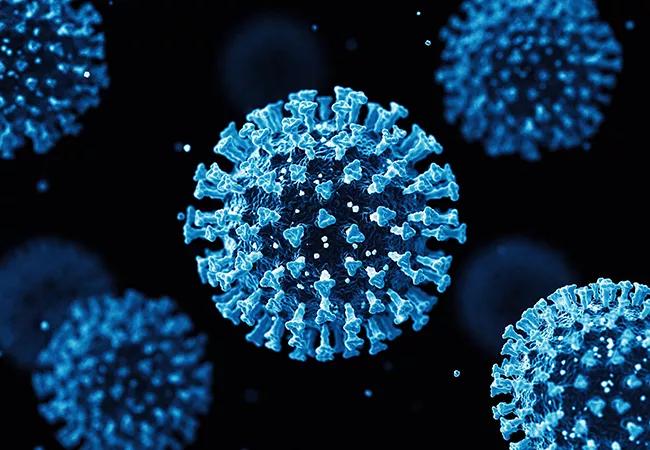Advertisement
Pediatric infectious disease expert says omicron is likely more transmissible than the delta variant

The omicron variant is demonstrating community spread in some parts of the world, but the implications of such still remain uncertain.
Advertisement
Cleveland Clinic is a non-profit academic medical center. Advertising on our site helps support our mission. We do not endorse non-Cleveland Clinic products or services. Policy
Scientists and public health officials are keeping a watchful eye on the developments related to the most recent coronavirus variant of concern: the omicron variant. First identified in South Africa in late November, the virus quickly overwhelmed the community, replacing the delta virus as the dominant strain.
Frank Esper, MD, pediatric infectious disease physician at Cleveland Clinic Children’s, says this suggests the virus exhibits characteristics that increase its transmissibility over previous variants. This isn’t revelatory, he explains, considering the virus has evolved over the last two years, and new dominant variants seem to be more contagious.
“If it’s more contagious, then it’s able to outgrow, smother, and outlast the older variants; this one seems to follow that pattern. The question, though, and we still don’t know until there are actual data, is whether or not this translates to disease severity,” he says.
Perhaps the most troubling aspect of this particular variant compared to its predecessors, even delta, is the disparity among genomic composition.
“I’ve done the alignment of all the different variants of concern that we’ve seen over this year: the alpha, the beta, the gamma, the delta and now the omicron. I’ll tell you, when you compare omicron to the other three or four variants that we’ve seen here, the difference is obvious. It’s like I’m looking at three cats and a dog.”
This difference could give it a survival advantage when it comes to evading the vaccine protections that we have been afforded.
“I’m interested to see how this variant evolves, because there may be some changes that this variant has that the others do not; this may allow it to evolve in a different trajectory.”
He anticipates that vaccines and boosters will become part of routine preventive care, something people get once or twice a year to prevent potential transmission and disease from an evolving viral genome. Given the deviation observed in omicron, a retooling, or updating, of the Pfizer, Moderna and Janssen vaccines is not out of the question to suppress the rates of infection from this new variant.
“There are a few unpublished reports from South Africa that suggest children under the age of five were actually a high group of infection, which is very different from what we’ve seen over the last two years,” says Dr. Esper.
“If that is really the case, it’s possible this virus has evolved to cause more symptomatic disease in the youngest age groups. And, as we know it, that has not been a hallmark of coronavirus. As pediatricians, we are closely monitoring this, but again, we need to see the published data.”
For the most part, healthy children with no underlying conditions have handled symptoms of the disease relatively well. He advises that children recover at home while parents monitor for any atypical breathing.
However, multisystem inflammatory response in children, known as MIS-C, is more concerning and leads to more hospitalizations in children than the coronavirus pneumonia, according to Dr. Esper. It’s unclear how—if at all— the omicron variant will affect post-infection inflammatory responses, like MIS-C, as compared to predecessor variants.
Advertisement
“The best way to avoid getting sick from this virus is still to be vaccinated. Delta has not gone away; delta is still out there. Omicron may be coming, and it may become more prevalent.”
If it does become the dominant strain, we may expect a doubling down on prevention efforts, including hand hygiene, which is always important, and an emphasis on masking, particularly indoors, regardless of vaccination status, until more is known about the variant and vaccines are optimized to contend with the new variant.
“When these new strains show a substantial advantage over previous variants, they have a tendency to take over in weeks, and so we may see the rise of omicron and the fall of delta. We, along with other healthcare systems, are screening specifically for omicron to see whether or not that switch happens,” Dr. Esper concludes.
Advertisement
Advertisement

Patients report improved sense of smell and taste

Clinicians who are accustomed to uncertainty can do well by patients

Unique skin changes can occur after infection or vaccine

Cleveland Clinic analysis suggests that obtaining care for the virus might reveal a previously undiagnosed condition

As the pandemic evolves, rheumatologists must continue to be mindful of most vulnerable patients

Early results suggest positive outcomes from COVID-19 PrEP treatment

Could the virus have caused the condition or triggered previously undiagnosed disease?

Five categories of cutaneous abnormalities are associated with COVID-19